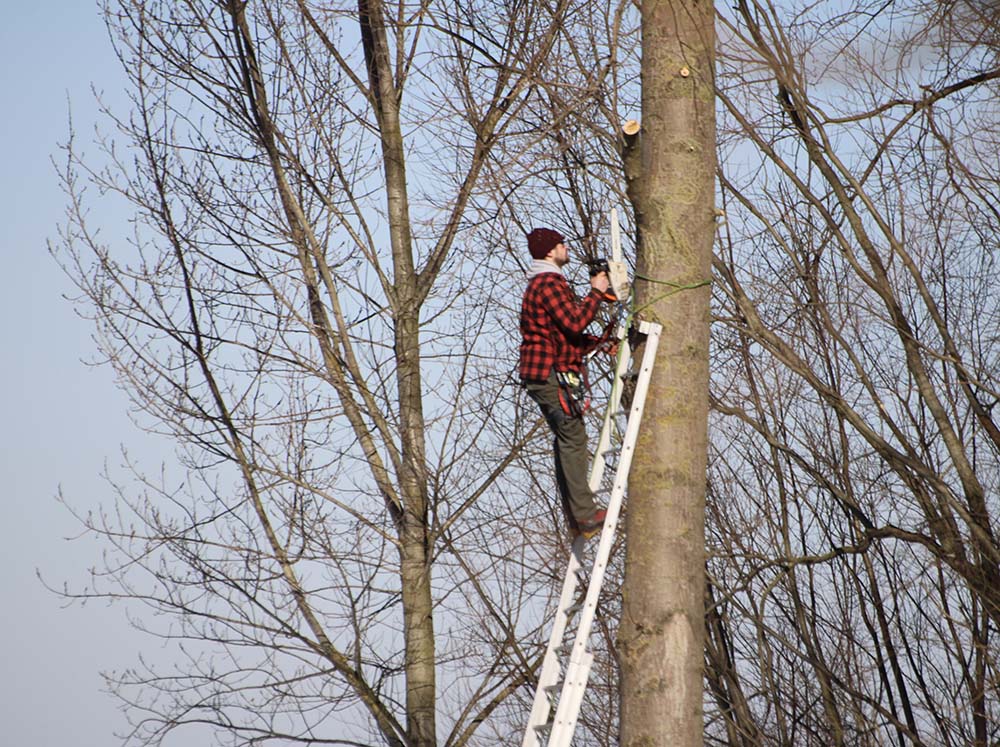Many people ask the question: “when is the best time to prune a fruit tree in Australia, autumn, summer, winter, or spring?” In this article, we are going to break it down for you. But first, what is the process of pruning? Let’s outline it for you so that you know what to expect. Following that, by the end of this article you should know the optimal time for pruning your fruit trees!
1 – Remove the suckers first. These are produced by trees in response to any damaged roots. These suckers make it harder to access the tree, and they also draw energy away from where it is needed most. Cut them low so that they do not reshoot.
2 – Be sure to remove any dead, dying, or diseased branches.
3 – Remove any and all branches that are touching the ground.
4 – Remove any inward facing branches. These reduce airflow to the centre of the tree, thus making it more prone to diseases and pests.
5 – Shorten the other branches. Any lanky growths that might break off if burdened with heavy fruit should be cut back to a new bud.
6 – Any thin branches (of a similar thickness to a pencil) that divide and carry plenty of fruit spurs should be cut back by reducing one of the divided sections. The fruit that does grow will then be slightly larger.
7 – Make sure that you cut back any long, vertical growths. This will not harm the tree and can make it easier to cover the tree with netting if you deem it necessary.
And now that you understand the process. When is the best time of year to prune your fruit trees? Let’s find out!

What is the best time of year to prune fruit trees?
The best time of year to prune fruit trees really depends on the type of fruit that you are growing. Since there are many types that each have their own quirks, the time of year that is best suited for your personal needs may vary. In addition to that, it all depends on the desired outcome…
Pruning fruit trees in autumn
Autumn is a great time to prune your fruit trees. You see, pruning during the winter period when the plant is dormant will promote growth in the springtime. However, if you decide to prune during autumn, after fruiting has taken place, you will be promoting flowers and therefore fruit in the following springtime. It all comes down to what you want.
Just be mindful, if you want fruit now, pruning your trees in autumn is a good shout. However, if you have a young tree and you wish to promote strong future growth, then you should at least wait until the winter (pruning newly planted fruit trees isn’t always advised).

Summer pruning fruit trees
Summer pruning fruit trees feels like the best time to do it. What better a time to be out in the garden right? Fortunately, pruning fruit trees during the summer is a great time for maintaining a tree’s shape and keeping it a reasonable size for the harvesting period. Summer (after fruiting) is also an ideal time for pruning stone-fruit (i.e., apricots), as they can heal whilst actively growing.
Pruning fruit trees in winter
Pruning fruit trees in winter is the best option for deciduous fruit trees (i.e., apples, pears, and plums). These types of trees are going to bear fruit no matter whether they have been pruned or not. However, if they do become too tall, then the fruit is going to be higher and much harder to reach. That, and when there is unproductive wood, they tend to be unreliable when they crop. The overall aim when pruning a fruit tree in your home, is to assist the tree in producing you reliable and high-quality crops, with good sized fruit on a tree that is easy to manage!
Pruning fruit trees in spring
As a rule of thumb, for fruit tree pruning, prune your fruit trees in early spring, or mid to late winter. The frequency at which you prune however is going to change over the course of its life cycle from a young sapling through to a mature tree. Each year, you pruning still will adapt depending on what stage of growth it is at. Let’s take a look at some examples:
- The first year of a tree’s growth requires formative pruning (trim the main trunk to about two and a half feet from the soil).
- In the second year of growth, you’ll want to remove any lower and inward shoots. Following that, prune a few of the upward shoots by at least half, allowing more new branches to form.
- In the third year, your tree will have much more structure, thus, prune the best branches by half in order to extend this framework and prepare for the fruiting in the following year.
- During the fourth year, there is only going to be a limited amount of pruning required. You can prune the main branches by a third of their size and trim the top a little bit to maintain a reasonable height.
- Now that the tree has grown suitably into your desired framework, you should only need to prune once a year after every harvest.
Conclusion
We hope that this article has been useful to you. In conclusion, there is no “best time” for pruning fruit trees as there are so many different species of fruit tree (with many desired outcomes that can vary depending on your own personal preferences). The easiest thing to do, if you are unsure, is to hire a professional tree pruning service. This not only removed any need for you to do any hard work (or make mistakes), but you’ll also be able to secure quality advice on how best to care for your particular fruit trees.

